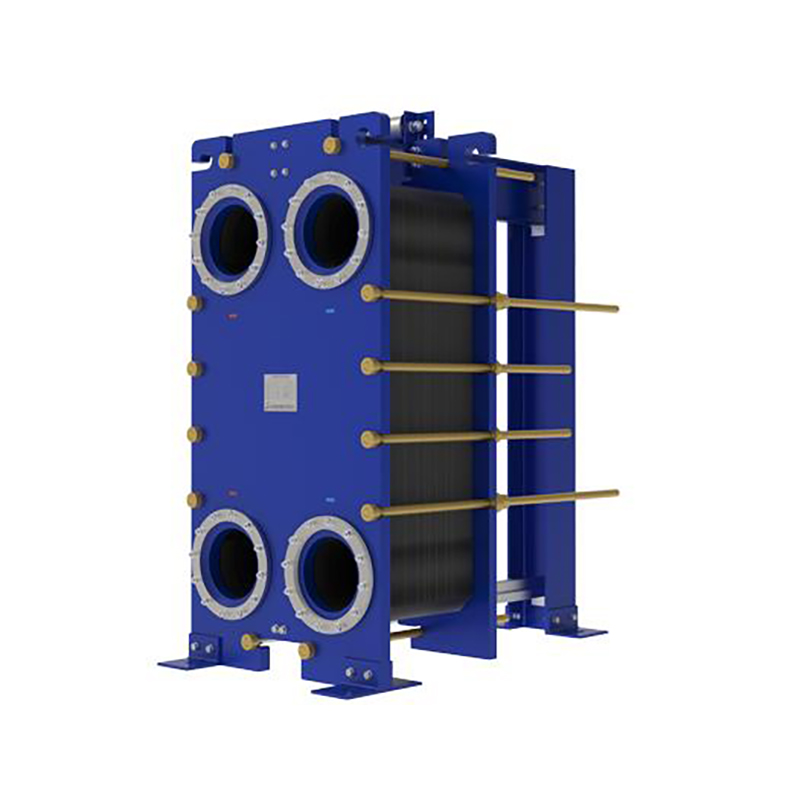5 key roles of plate heat exchanger gaskets.
Plate heat exchanger gaskets perform 5 key roles: ...
More
A geothermal heat exchange system, also known as a ground-source heat pump (GSHP), is a highly efficient, renewable energy technology used for heating and cooling buildings. Unlike conventional HVAC systems that burn fossil fuels or rely on variable outdoor air temperatures, a geothermal system leverages the earth’s stable subterranean temperature as its primary energy source. The core components include a network of underground pipes, called a ground loop, which is buried either horizontally or vertically on the property. This loop is filled with a water-antifreeze solution that circulates through it. During the winter, the fluid absorbs the consistent thermal energy stored in the ground (typically 45°F to 75°F or 7°C to 24°C year-round, depending on latitude) and carries it to a heat pump unit inside the building. The heat pump then concentrates this low-grade heat using a refrigeration cycle and distributes warm air through the ductwork. In the summer, the process is reversed: the system extracts heat from the indoor air and transfers it into the cooler ground loop, effectively providing air conditioning. This closed-loop exchange with the earth’s thermal battery makes it a fundamentally sustainable technology that significantly reduces reliance on traditional electricity and fossil fuels for climate control.
The efficiency of these systems is measured by their Coefficient of Performance (COP) for heating and Energy Efficiency Ratio (EER) for cooling. According to data from the U.S. Department of Energy and the Environmental Protection Agency (EPA), geothermal heat pumps are among the most efficient heating and cooling systems available today, with COPs typically ranging from 3.0 to 5.0. This means for every unit of electrical energy used to operate the system, it provides three to five units of thermal energy, resulting in a 400-600% efficiency rating. In contrast, even the most advanced high-efficiency furnaces cannot exceed 98% efficiency. The installation involves significant upfront work to excavate and install the ground loops, which can be configured as horizontal trenches (cost-effective but require more land area) or vertical boreholes (ideal for smaller lots but more expensive to drill). Despite the initial investment, the operational savings are substantial, and the systems are renowned for their durability, with indoor components lasting 20-25 years and the underground ground loop having a lifespan of 50+ years, often backed by 50-year warranties.
The advantages of installing a geothermal heat exchange system are extensive, encompassing significant financial savings, profound environmental benefits, and enhanced comfort and reliability. Financially, the most compelling advantage is the drastic reduction in energy bills. The U.S. Environmental Protection Agency (EPA) estimates that homeowners can save 30% to 70% on heating costs and 20% to 50% on cooling costs compared to conventional systems. These savings can lead to a return on investment (ROI) typically within 5 to 10 years, after which the owner benefits from drastically lower utility costs for decades. Furthermore, many governments offer incentives to offset the high initial installation cost. In the United States, the federal investment tax credit (ITC) currently allows for a 30% tax credit for systems installed through 2032, with no upper limit. Many state and local utilities also offer additional rebates and incentives, making the net cost much more affordable and accelerating the payback period.
Environmentally, geothermal systems are a clear winner. They produce no on-site greenhouse gas emissions or combustion fumes, drastically reducing a building's carbon footprint. The Department of Energy states that installing a geothermal system is equivalent to planting 750 trees or taking two cars off the road in terms of carbon reduction. By switching from a fossil fuel system to a geothermal one, a typical household can avoid emitting 4 to 6 tons of CO2 annually. From a comfort perspective, these systems provide superior humidity control, even, draft-free heating and cooling, and exceptionally quiet operation since there is noisy outdoor condenser unit. They are also incredibly reliable and require less maintenance than conventional systems because the critical mechanical components are located indoors, protected from the elements. This combination of unmatched efficiency, long-term economic value, and environmental stewardship makes a geothermal heat exchange system a future-proof investment for any property owner.
Select the most popular foreign trade service products to meet your diverse needs
Learn more about the dynamics and professional knowledge of the foreign trade industry

Plate heat exchanger gaskets perform 5 key roles: ...
More
A gasket in heat exchanger seals surfaces, blocks ...
MoreAPI 662 defines standards for plate heat exchanger...
More
Plate heat exchanger solutions boost efficiency, r...
More
Plate heat exchangers cut industrial energy use, l...
MoreHeat exchanger heating in HVAC systems boosts ener...
MoreSelect the most popular foreign trade service products to meet your diverse needs
Explore more content related to foreign trade services

User Comments
Service Experience Sharing from Real Customers
Sarah Chen
Facilities ManagerIncredibly efficient system. Our building's heating and cooling costs have been reduced by over 40% since installation. The installation team was professional and the system requires minimal maintenance. A fantastic long-term investment for any commercial property.
David Miller
HomeownerWe installed this geothermal system last year and it's been flawless. It keeps the house at a perfectly consistent temperature year-round, and our energy bills are a fraction of what they used to be. Highly recommend for anyone looking for a sustainable and cost-effective solution.
James Wilson
Vineyard OwnerWe use the geothermal exchange to control the temperature in our wine cellars. The precision and stability it offers are crucial for preserving our vintages. The system is reliable and far more efficient than our previous traditional HVAC. One star off for the initial investment cost, but it's worth it.
Lisa Rodriguez
School AdministratorThis system has been a game-changer for our school district. Not only have we significantly cut our operational costs, but we also use it as an educational tool for our science classes to teach students about renewable energy. Performance is exceptional even during extreme weather.